Blog
Ahmed Abdul-Malik (born Jonathan Tim, Jr.; January 30, 1927 – October 2, 1993) was an American jazz double bassist and oud player. Abdul-Malik is remembered for integrating Middle Eastern and North African music styles in his jazz music. He was a bass player for Art Blakey, Earl Hines, Randy Weston, and Thelonious Monk, among others.
Abdul-Malik was most active as a jazz musician from the mid-1950s to the mid-1960s. He recorded half a dozen albums as leader, which have been described as containing a “refreshing” fusion of jazz with Arabic and African music. During this time he was also described as “a hard bop bassist of some distinction”. As an oud player he did a tour of South America for the United States Department of State and performed at an African jazz festival in Morocco.
more...David Roy Eldridge (January 30, 1911 – February 26, 1989), nicknamed “Little Jazz“, was an American jazz trumpeter. His sophisticated use of harmony, including the use of tritone substitutions, his virtuosic solos exhibiting a departure from the dominant style of jazz trumpet innovator Louis Armstrong, and his strong impact on Dizzy Gillespie mark him as one of the most influential musicians of the swing era and a precursor of bebop.
Eldridge was born on the North Side of Pittsburgh, Pennsylvania on January 30, 1911, to parents Alexander, a wagon teamster, and Blanche, a gifted pianist with a talent for reproducing music by ear, a trait that Eldridge claimed to have inherited from her. Eldridge began playing the piano at the age of five; he claims to have been able to play coherent blues licks at even this young age.The young Eldridge looked up to his older brother, Joe Eldridge (born Joseph Eldridge, 1908, North Side of Pittsburgh, Pennsylvania, died March 5, 1952), particularly because of Joe’s diverse musical talents on the violin, alto saxophone, and clarinet. Roy took up the drums at the age of six, taking lessons and playing locally. Joe recognized his brother’s natural talent on the bugle, which Roy played in a local church band, and tried to convince Roy to play the valved trumpet. When Roy began to play drums in his brother’s band, Joe soon convinced him to pick up the trumpet, but Roy made little effort to gain proficiency on the instrument at first. It was not until the death of their mother, when Roy was eleven, and his father’s subsequent remarriage that Roy began practicing more rigorously, locking himself in his room for hours, and particularly honing the instrument’s upper register. From an early age, Roy lacked proficiency at sight-reading, a gap in his musical education that would affect him for much of his early career, but he could replicate melodies by ear very effectively.
more...Theatre 55’s second performance at the Mixed Blood Theater. Saturday January 29th 2022 7pm. Music with Victor Zupanc, Jamie Carter, Lyra Olson and mick laBriola.
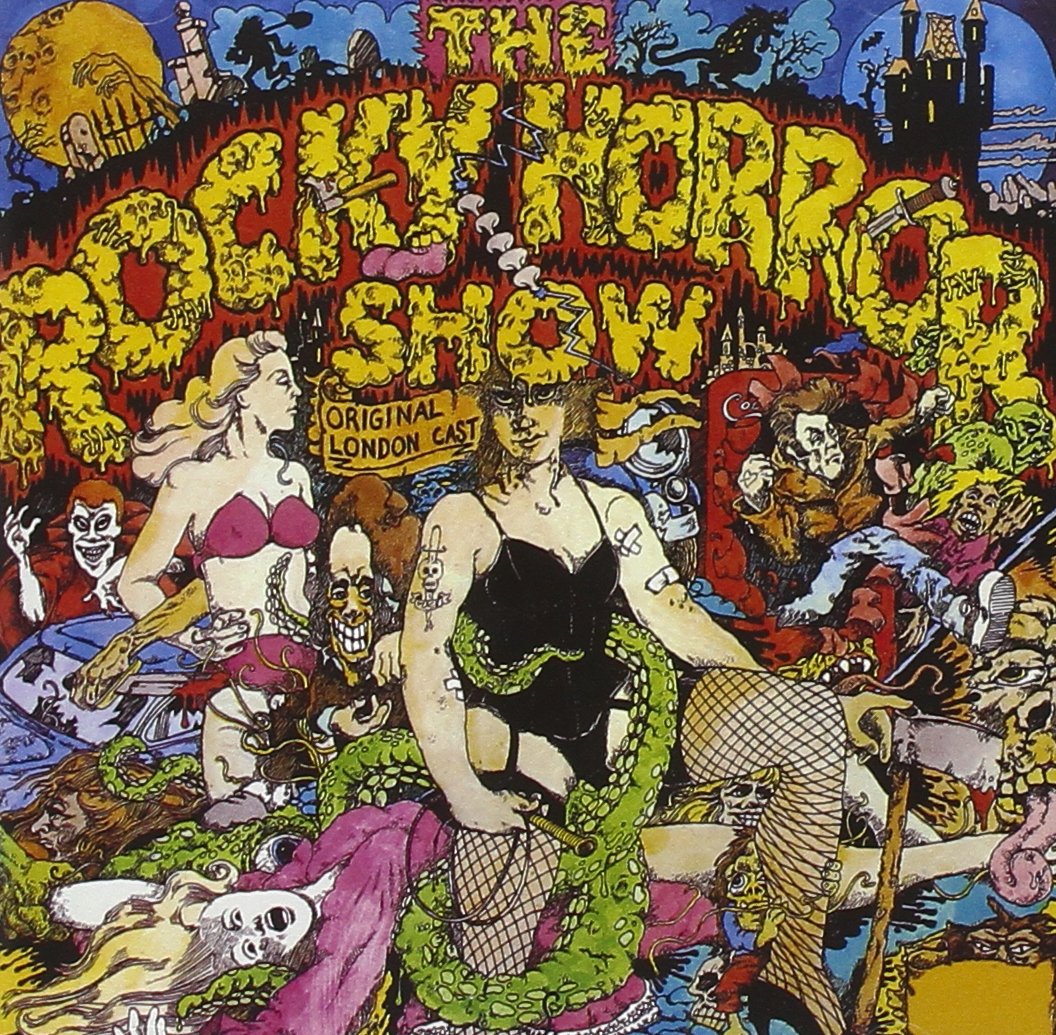
Named for the southern constellation toward which most of its galaxies can be found, the Fornax Cluster is one of the closest clusters of galaxies. About 62 million light-years away, it is almost 20 times more distant than our neighboring Andromeda Galaxy, and only about 10 percent farther than the better known and more populated Virgo Galaxy Cluster. Seen across this two degree wide field-of-view, almost every yellowish splotch on the image is an elliptical galaxy in the Fornax cluster. Elliptical galaxies NGC 1399 and NGC 1404 are the dominant, bright cluster members toward the upper left (but not the spiky foreground stars). A standout barred spiral galaxy NGC 1365 is visible on the lower right as a prominent Fornax cluster member.
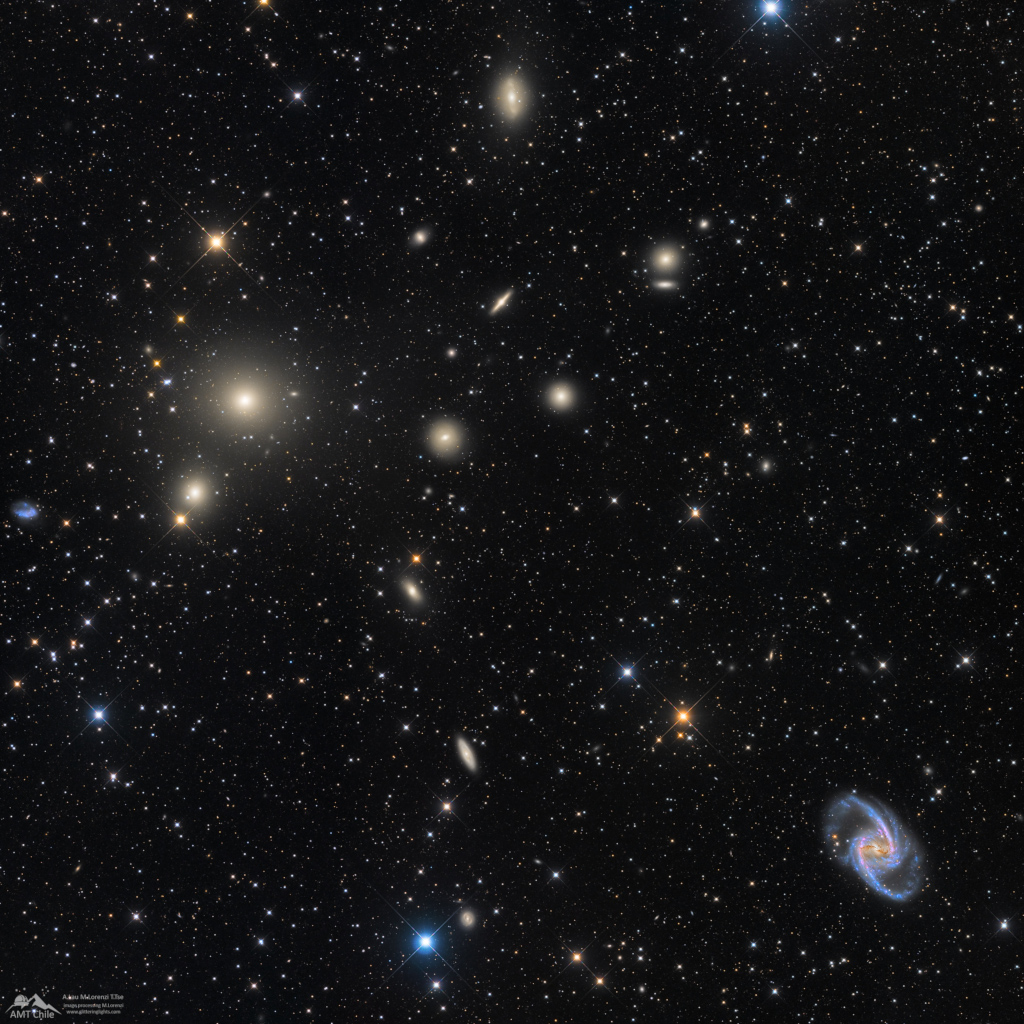
Franco Cerri (29 January 1926 – 18 October 2021) was an Italian guitarist and double bassist.
Cerri was born in Milan and learned to play guitar when he was 17. In 1945 he became a member of the group led by Gorni Kramer and joined the orchestra of the television show Buone vacanze. He played double bass in addition to guitar starting in the 1950s, such as with Chet Baker and Buddy Collette. He has also played with Dizzy Gillespie, Johnny Griffin, Stéphane Grappelli, Lars Gullin, Billie Holiday, Lee Konitz, Gerry Mulligan, Lou Bennett, Bud Shank, Tony Scott, Django Reinhardt, Phil Woods, and the Modern Jazz Quartet. He cited as influences Django Reinhardt, Barney Kessell, and René Thomas. Cerri has led quartets and quintets with Tullio De Piscopo, Pino Presti, Gianluigi Trovesi, Flavio Ambrosetti, and Jean-Luc Ponty. In 1980 he formed a duo with pianist Enrico Intra, with whom he founded the “Civica Scuola di Jazz” in Milan.
On 1 January 2006, he was knighted by President Carlo Azeglio Ciampi. Cerri died on 18 October 2021, at the age of 95
more...Eddie Taylor (January 29, 1923 – December 25, 1985) was an American electric blues guitarist and singer.
Born Edward Taylor in Benoit, Mississippi, as a boy Taylor taught himself to play the guitar. He spent his early years playing at venues around Leland, Mississippi, where he taught his friend Jimmy Reed to play the guitar. With a guitar style deeply rooted in the Mississippi Delta tradition, Taylor moved to Chicago, Illinois, in 1948.
Taylor never achieved the stardom of some of his contemporaries in the Chicago blues scene, he was nevertheless an integral part of that era. He is especially noted as a main accompanist for Jimmy Reed; he also worked for John Lee Hooker, Big Walter Horton, Sam Lay, and others. Earwig Music Company recorded him with Kansas City Red and Big John Wrencher for the album Original Chicago Blues. He later teamed up with Earring George Mayweather, and they jointly recorded several tracks, including “You’ll Always Have a Home” and “Don’t Knock at My Door”. Several of these were released as singles, of which “Big Town Playboy” and “Bad Boy”, issued by Vee Jay Records, were local hits in the 1950s, but Taylor’s singles generally were not commercially successful.
more...James Lee Jamerson (January 29, 1936 – August 2, 1983) was an American bass player. He was the uncredited bassist on most of the Motown Records hits in the 1960s and early 1970s (Motown did not list session musician credits on their releases until 1971), and is now regarded as one of the most influential bass players in modern music history. He was inducted into the Rock and Roll Hall of Fame in 2000. As a session musician he played on twenty-three Billboard Hot 100 number one hits, as well as fifty-six R&B number one hits.
In its special issue “The 100 Greatest Bass Players” in 2017, Bass Player magazine ranked Jamerson number one and the most influential bass guitarist. In 2020, Rolling Stone magazine ranked Jamerson number one in its list of the 50 greatest bassists of all time.
A native of Edisto Island, South Carolina, he was born to James Jamerson Sr. and Elizabeth Bacon. He was raised in part by his grandmother who played piano, and his aunt who sang in church choir. As a youngster he was a competent piano player and performed in public. He briefly played the trombone. As a teenager he was a reserved person, and passionate about music. He listened to gospel, blues and jazz music on the radio.
more...Edwin Thomas “Ed” Shaughnessy (January 29, 1929 – May 24, 2013) was a swing music and jazz drummer long associated with Doc Severinsenand a member of The Tonight Show Band on The Tonight Show Starring Johnny Carson.
Shaughnessy was born in Jersey City, New Jersey and grew up in the New York City area, working in the 1940s with George Shearing, Jack Teagarden, and Charlie Ventura. In the 1950s he worked in the Benny Goodman and Tommy Dorsey bands. In the 1960s he played for Count Basie prior to joining The Tonight Show Band. He was the drummer on Bashin’: The Unpredictable Jimmy Smith in 1962 which featured big band arrangements by Oliver Nelson, including the pop hit “Walk on the Wild Side” which peaked at #21 on the Billboard chart. Shaughnessy recorded extensively throughout his career and was known for his drum competitions with Buddy Rich.
Although best known as a big band drummer, Shaughnessy also performed small group work with Gene Ammons, Roy Eldridge, Billie Holiday, Mundell Lowe, Teo Macero, Charles Mingus, Shirley Scott, Jack Sheldon, Horace Silver, and many others. For several years Shaughnessy was a member of the house band at Birdland and other New York clubs. In the early 1970s he was doing similar work in Los Angeles and is credited with discovering Diane Schuur, whom he introduced at the 1976 Monterey Jazz Festival. Shaughnessy played in an early incarnation of the “Sesame Street” orchestra along with percussionist Danny Epstein, reed player Wally Kane, and, on occasion, guitarist Bucky Pizzarelli.
He was an endorser of Ludwig drums, Sabian cymbals and Pro-Mark drumsticks.
Shaughnessy was married to Ilene Woods, the original voice of Cinderella, who died in 2010. He died of a heart attack in Calabasas, California at the age of 84. He was cremated. He was survived by his son Daniel, his stepdaughter Stephanie and grandchildren. His other son James preceded him in death from a car accident in 1984.
more...Theatre 55 presents RHPS at the Mixed Blood Theater on the West Bank. Opening night Friday January 28th 2002 7pm running through Sunday February 6th. Music by Victor Zupanc, Jamie Carter, Lyra Olson and mick laBriola.
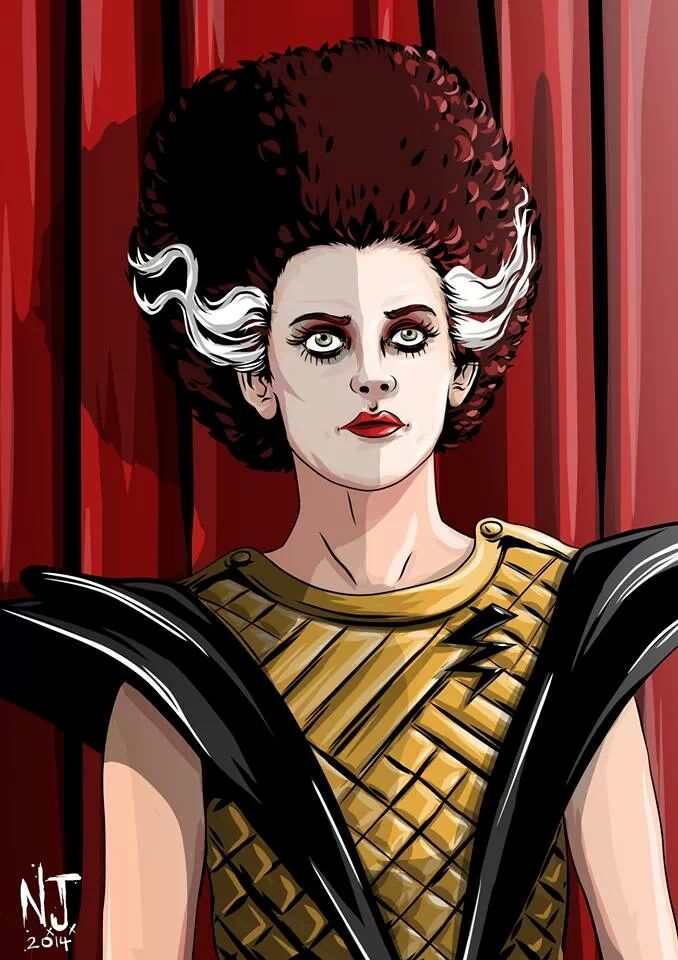
This image shows a few groups of bright rimmed globules that are collectively catalogued as IC 1871 on the right and SFO 12 on the left. Their gaseous forms are sculpted by the UV radiation and stellar winds from many hot young stars in the star cluster associated with the Soul Nebula. The term “bright rimmed” arises from the side of the globules that are facing the ionzing source exhibiting bright rims as a result of the gas and dust becoming more compressed and denser and therefore brighter than the surrounding material.
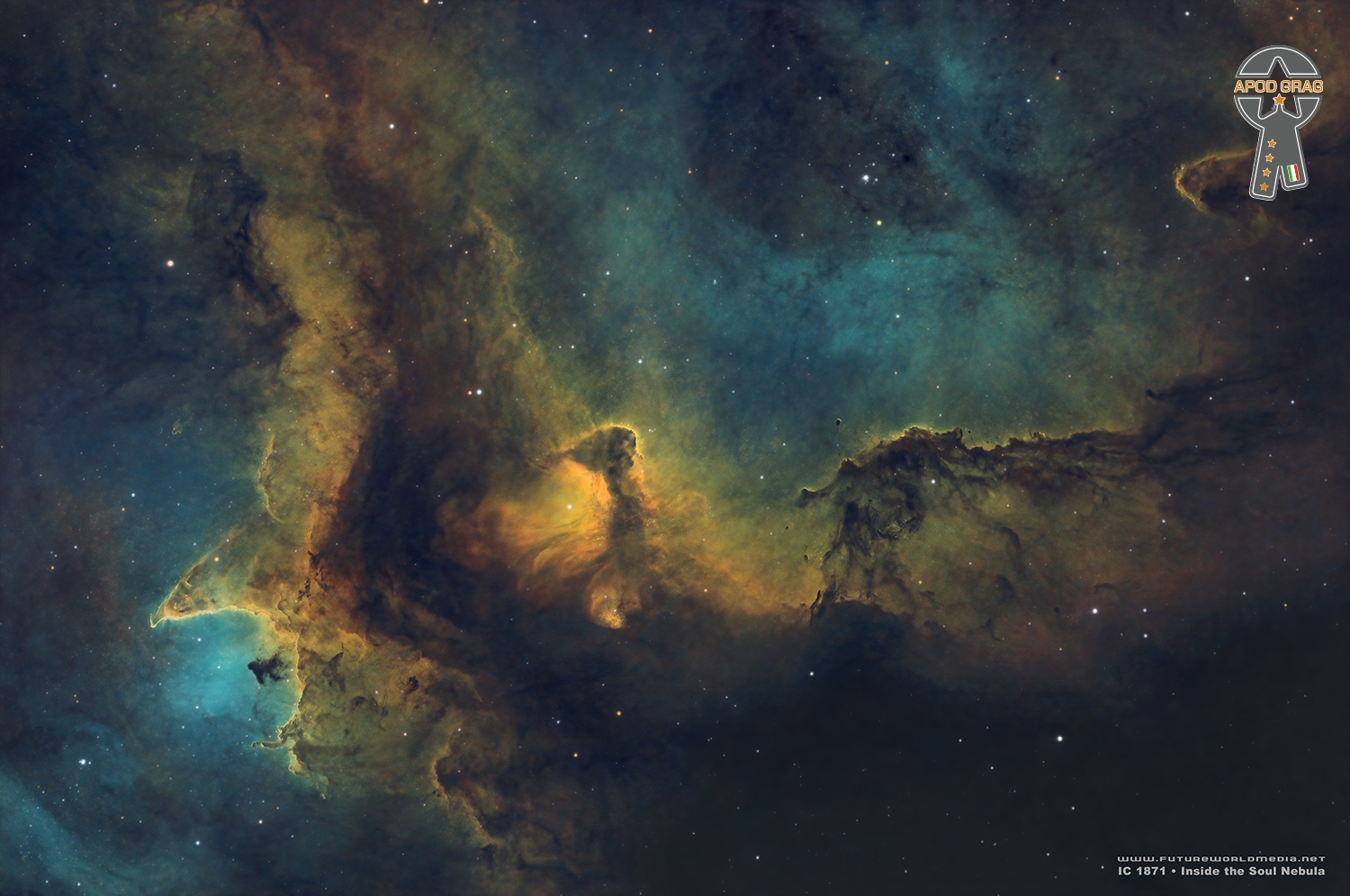
Osbourne Ruddock (28 January 1941 – 6 February 1989), better known as King Tubby, was a Jamaican sound engineer who greatly influenced the development of dub in the 1960s and 1970s.
Tubby’s innovative studio work, which saw him elevate the role of the mixing engineer to a creative fame previously only reserved for composers and musicians, would prove to be influential across many genres of popular music. He is often cited as the inventor of the concept of the remix that later became ubiquitous in dance and electronic music production. Singer Mikey Dread stated, “King Tubby truly understood sound in a scientific sense. He knew how the circuits worked and what the electrons did. That’s why he could do what he did”.
King Tubby’s first interaction with the music industry came in the late 1950s with the rising popularity of Jamaican sound systems, which were to be found all over Kingston and which were developing into enterprising businesses. As a talented radio repairman, Tubby soon found himself in great demand by most of the major sound systems of Kingston, as the tropical weather of the Caribbean island (often combined with sabotage by rival sound system owners) led to malfunctions and equipment failure. Tubby owned an electrical repair shop on Drumalie Avenue, Kingston, that fixed televisions and radios. It was here that he built large amplifiers for the local sound systems. In 1961–62, he built his own radio transmitter and briefly ran a pirate radio station playing ska and rhythm and blues which he soon shut down when he heard that the police were looking for the perpetrators. Tubby eventually formed his own sound system, Tubby’s Hometown Hi-Fi, in 1958. It became a crowd favourite due to the high quality sound of his equipment, exclusive releases and Tubby’s own echo and reverb sound effects, at that point something of a novelty.The sound also launched the career of U-Roy, its featured toaster.
King Tubby was shot dead on 6 February 1989, outside his home in Duhaney Park, Kingston, upon returning from a session at his Waterhouse studio.
more...John Towner Williams (born February 8, 1932) is an American composer, conductor and pianist. In a career that has spanned seven decades, he has composed some of the most popular, recognizable, and critically acclaimed film scores in cinematic history. Williams has won 25 Grammy Awards, seven British Academy Film Awards, five Academy Awards, and four Golden Globe Awards. With 52 Academy Award nominations, he is the second most-nominated individual, after Walt Disney. His compositions are considered the epitome of film music; Classic FM considers Williams to be one of the greatest composers of classical music in history.
Williams has composed for many critically acclaimed and popular movies, including the Star Wars saga, Jaws, Close Encounters of the Third Kind, Superman, E.T. the Extra-Terrestrial, the first two Home Alone films, the Indiana Jones films, the first two Jurassic Park films, Schindler’s List, and the first three Harry Potter films. Williams has also composed numerous classical concertos and other works for orchestral ensembles and solo instruments. He served as the Boston Pops‘ principal conductor from 1980 to 1993 and is its laureate conductor. He has been associated with director Steven Spielberg since 1974, composing music for all but five of his feature films, and George Lucas, with whom he has worked on both of his main franchises. Other works by Williams include theme music for the 1984 Summer Olympic Games, NBC Sunday Night Football, “The Mission” theme used by NBC News and Seven News in Australia, the television series Lost in Space and Land of the Giants, and the incidental music for the first season of Gilligan’s Island.
In 2005, the American Film Institute selected Williams’s score to 1977’s Star Wars as the greatest film score of all time. The Library of Congress also entered the Star Wars soundtrack into the National Recording Registry for being “culturally, historically, or aesthetically significant”. Williams was inducted into the Hollywood Bowl‘s Hall of Fame in 2000, and received a Kennedy Center Honor in 2004. His AFI Life Achievement Award in 2016 was the first to be awarded outside of the acting and directing fields. He has composed the score for nine of the top 25 highest-grossing films at the U.S. box office (adjusted for inflation). His work has influenced other composers of film, popular, and contemporary classical music; Norwegian composer Marcus Paus argues that Williams’s “satisfying way of embodying dissonance and avant-garde techniques within a larger tonal framework” makes him “one of the great composers of any century”.
more...Ronnie Scott OBE (born Ronald Schatt, 28 January 1927 – 23 December 1996) was a British jazz tenor saxophonist and jazz club owner. He co-founded Ronnie Scott’s Jazz Club in London’s Soho district, one of the world’s most popular jazz clubs, in 1959.
Ronnie Scott was born in Aldgate, East London, into a Jewish family. His father, Joseph Schatt, was of Russian ancestry, and his mother Sylvia’s family attended the Portuguese synagogue in Alie Street. Scott attended the Central Foundation Boys’ School.
Scott began playing in small jazz clubs at the age of 16. His claim to fame was that he was taught to play by “Vera Lynn’s father-in-law!”. He toured with trumpeter Johnny Claes from 1944 to 1945 and with Ted Heath in 1946. That same year, he appeared as one of the band members in George in Civvy Street. He worked with Ambrose, Cab Kaye, and Tito Burns. He was involved in the short-lived musicians’ co-operative Club Eleven band and club (1948–50) with Johnny Dankworth. Scott became an acquaintance of the arranger/composer Tadd Dameron, when the American was working in the UK for Heath, and is reported to have performed with Dameron as the pianist, at one Club Eleven gig.
more...https://www.youtube.com/watch?v=Wa0g-d4AkM8
more...South of the large star-forming region known as the Orion Nebula, lies bright blue reflection nebula NGC 1999. At the edge of the Orion molecular cloud complex some 1,500 light-years distant, NGC 1999’s illumination is provided by the embedded variable star V380 Orionis. The nebula is marked with a dark sideways T-shape at center right in this telescopic vista that spans about two full moons on the sky. Its dark shape was once assumed to be an obscuring dust cloud seen in silhouette. But infrared data suggest the shape is likely a hole blown through the nebula itself by energetic young stars. In fact, this region abounds with energetic young stars producing jets and outflows with luminous shock waves. Cataloged as Herbig-Haro (HH) objects, named for astronomers George Herbig and Guillermo Haro, the shocks have intense reddish hues. HH1 and HH2 are just below and right of NGC 1999. HH222, also known as the Waterfall nebula, looks like a red gash near top right in the frame. To create the shocks stellar jets push through the surrounding material at speeds of hundreds of kilometers per second.
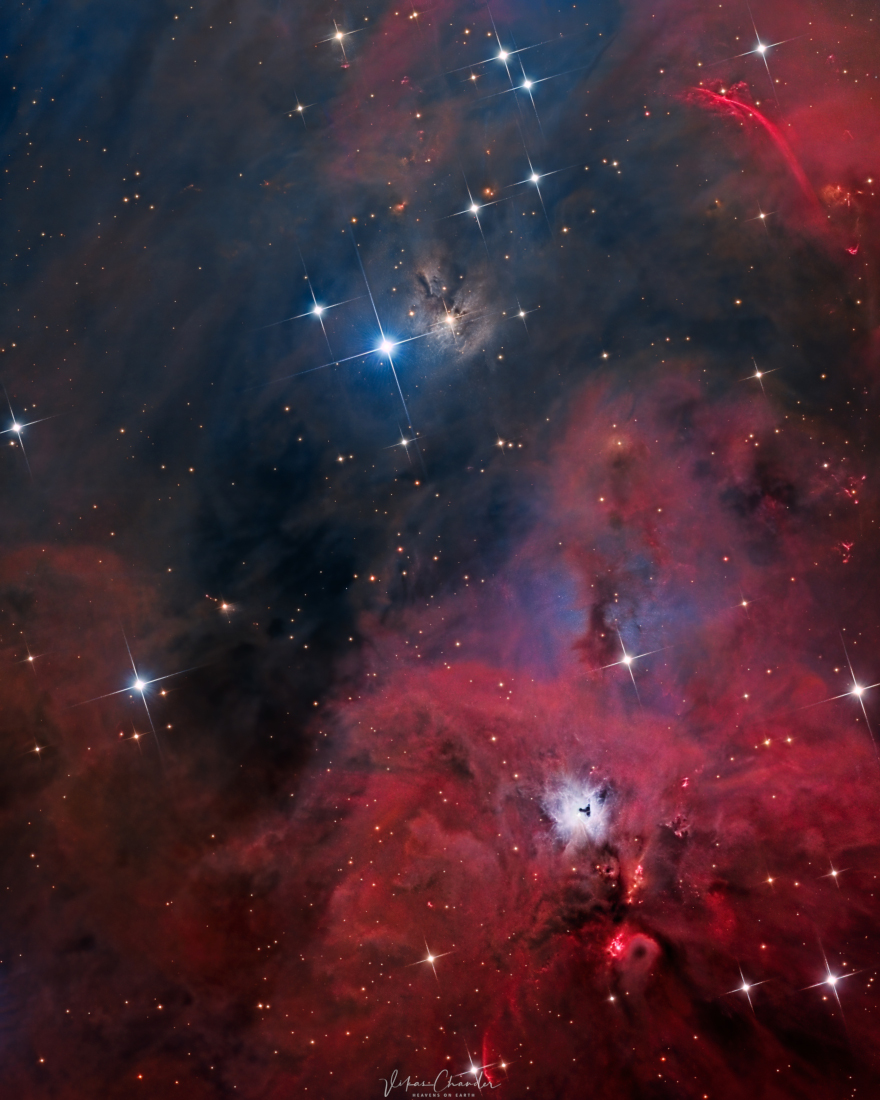
More Posts
- World Music with Franco Luambo
- Daily Roots with Tony Ranking & Shaka All Stars
- The Cosmos with NGC 5033
- Tom Waits Day
- Louis Prima Day
- Blind John Davis Day
- World Music with Fosforito y Juan Habichuela
- Daily Roots with the Chosen Few
- The Cosmos with NGC 7013
- Miroslav Vitous Day
- Eddie Gladden Day
- Bill Evans Day
- World Music with Anandi Bhattacharya
- Daily Roots with Duke Reed
- The Cosmos with Pismis 24-1
- Egberto Gismonti Day
- Art Davis Day
- Little Richard Day
- World Music with Gogol Bordello
- Daily Roots with Tommy McCook